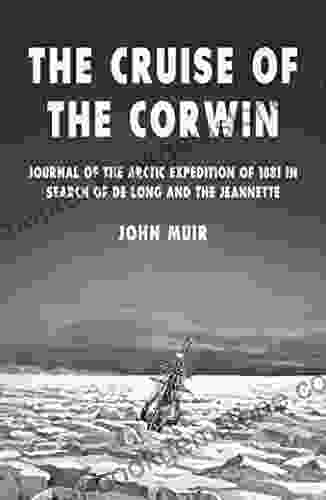In July 1881, the steamship Jeannette embarked on an ill-fated expedition to the Arctic, led by Lieutenant Commander George W. De Long of the United States Navy. The ship and its crew vanished into the frozen wastes, and their fate became one of the greatest mysteries of the 19th century.
In 1884, three years after the Jeannette's disappearance, a search expedition was launched to find the missing vessel and its crew. Led by Lieutenant Raymond P. Rodgers, the search party sailed north into the Arctic in the steamship Rodgers.
4.1 out of 5
| Language | : | English |
| File size | : | 1441 KB |
| Text-to-Speech | : | Enabled |
| Enhanced typesetting | : | Enabled |
| Word Wise | : | Enabled |
| Print length | : | 178 pages |
| Screen Reader | : | Supported |
This article will delve into the thrilling narrative of the 1881 Arctic expedition in search of De Long and the Jeannette, providing a detailed account of the expedition's circumstances, challenges, and ultimate outcome.
The Jeannette Expedition
The Jeannette expedition was conceived in 1879 by James Gordon Bennett, Jr., the wealthy publisher of the New York Herald. Bennett envisioned a daring expedition that would sail north of Siberia and explore the uncharted polar regions.
Lieutenant Commander George W. De Long, a decorated Naval officer with experience in the Arctic, was appointed to lead the expedition. The ship chosen for the voyage was the steamship Jeannette, a sturdy whaler that had been extensively reinforced for ice navigation.
The Jeannette departed San Francisco in July 1881, with a crew of 33 officers and men. The expedition's goals were ambitious: to explore the Arctic Ocean, to find the legendary Northwest Passage, and to establish a scientific station at the North Pole.
The Loss of the Jeannette
The Jeannette sailed north along the coast of Siberia, encountering heavy ice floes and storms. In September 1881, the ship became trapped in the ice pack and was carried northward.
For over two years, the Jeannette drifted with the ice, slowly moving westward. During this time, the crew endured harsh Arctic conditions, including extreme cold, lack of sunlight, and dwindling food supplies.
In June 1883, the Jeannette was crushed by the ice and sank in the Laptev Sea. The crew escaped onto the ice floes, where they drifted for several months until they reached the shores of Siberia.
The Search for the Jeannette
News of the Jeannette's loss reached the United States in the fall of 1883. The Navy immediately organized a search expedition to find the missing crew.
Lieutenant Raymond P. Rodgers, a skilled navigator and explorer, was chosen to lead the search party. Rodgers sailed north in the steamship Rodgers in June 1884, following the route taken by the Jeannette.
The Rodgers encountered heavy ice conditions, but Rodgers pressed on, determined to find any survivors. In July 1884, the Rodgers spotted wreckage from the Jeannette, confirming the fate of the vessel.
Rodgers continued his search, and in August 1884, he found the remains of the Jeannette's crew on the banks of the Lena River in Siberia. The crew had succumbed to exposure, starvation, and disease during their arduous journey across the frozen wasteland.
The Return of the Rodgers
The Rodgers returned to San Francisco in October 1884, bringing back the tragic news of the Jeannette expedition. The search party had found no survivors, but they had recovered the bodies of the crew and the ship's logbook, which provided a detailed account of the expedition's fate.
The loss of the Jeannette and its crew was a significant setback for Arctic exploration. However, the expedition's legacy lived on, as the search party's efforts shed light on the harsh realities of Arctic survival and helped to advance the field of polar exploration.
The 1881 Arctic expedition in search of De Long and the Jeannette was a daring and ultimately tragic adventure. The Jeannette and its crew were lost to the unforgiving Arctic ice, but their story remains a compelling tale of human endurance, exploration, and sacrifice.
The search expedition led by Lieutenant Rodgers brought closure to the Jeannette's mystery, while also reinforcing the importance of Arctic safety and research. The legacy of the Jeannette expedition continues to inspire explorers and scientists to this day, as they continue to push the boundaries of human knowledge in the frozen realm of the Arctic.
























































































































































































































































































































































































































































































































































